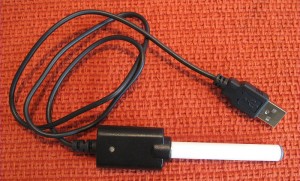According to recent reports, cigarette smoke results in more than 480,000 deaths annually in the United States alone (U.S. Department of Health and Human Services, 2014), and tobacco use remains the leading cause of preventable disease and premature death (Benowitz, 2010). Despite the known risks for cardiovascular, respiratory, and perinatal pathoses associated with cigarette use, in addition to the direct correlation with various forms of cancer, the rate of new tobacco users annually is essentially equal to that of the number of successful quitters (Centers for Disease Control and Prevention, 2009).
80% of new smokers each year are under 18 years old. Adolescents are subject to many risk factors which can lead to experimentation with tobacco products[1] including; chewing tobacco, snuff, snus, dissolvable tobacco and electronic cigarettes. The smokeless forms of tobacco are of particular concern for this younger population, as studies have shown that the likelihood of developing a dependence on nicotine is inversely proportional to the age at which use begins – the younger you are, the more likely you are to become addicted. Furthermore, animal studies on nicotine addiction have demonstrated that permanent changes to the developing brain are more pronounced in younger animals than in adults (Lynch, 1994).
What is particularly alarming with forms of smokeless tobacco such as electronic cigarettes, or e-cigs, is that they are being advertised as a healthier alternative to traditional cigarettes. While e-cigarettes may not contain all of the chemicals of traditional cigarettes (which include cyanide, arsenic, and polycyclic aromatic hydrocarbons – a class of chemical molecules commonly found in car exhaust), they do still contain cancer causing chemicals (Fowles and Dybing, 2003).
Generally, an electronic cigarette contains a mixture of vegetable glycerin, propylene glycol, nicotine, and flavorings. Because these devices are so novel, regulations regarding product quality as well as research to determine how these chemicals impact users are limited [2] . Despite the new packaging and the lack of visible smoke, the safest course of action, both for dental and whole-body health, is still to avoid addictive nicotine products.
Works cited:
Benowitz, N., (2010). Nicotine addiction. New England Journal of Medicine, 362(24), 2295-2303. doi: 10.1056/NEJMra0809890. Retrievable from website: http://www.ncbi.nlm.nih.gov/pmc/articles/PMC2928221/
Centers for Disease Control and Prevention. Centers for Disease Control and Prevention, MMWR Morb Mortal Wkly Rep. (2009). Cigarette smoking among adults and trends in smoking cessation- united states, 2008 ( 19910909). Retrieved from website:
http://www.ncbi.nlm.nih.gov/pubmed/19910909
Fowles J, Dybing E. Application of toxicological risk assessment principles to the chemical constituents of cigarette smoke. Tobacco Control.2003;12(4):424–30. Retrievable from website: http://www.ncbi.nlm.nih.gov/pmc/articles/PMC1747794/
Lynch BS, Bonnie RJ. Growing up tobacco free — preventing nicotine addiction in children and youths. Washington, DC: National Academy Press; 1994. The nature of nicotine addiction; pp. 28–68.
U.S. Department of Health and Human Services. U.S. Department of Health and Human Services, Centers for Disease Control and Prevention, National Center for Chronic Disease and Prevention and Health Promotion, Office on Smoking and Health. (2014).The health consequences of smoking- 50 years of progress. a report of the surgeon general.. Retrieved from website: http://www.cdc.gov/tobacco/data_statistics/fact_sheets/health_effects/tobacco_related_mortality/